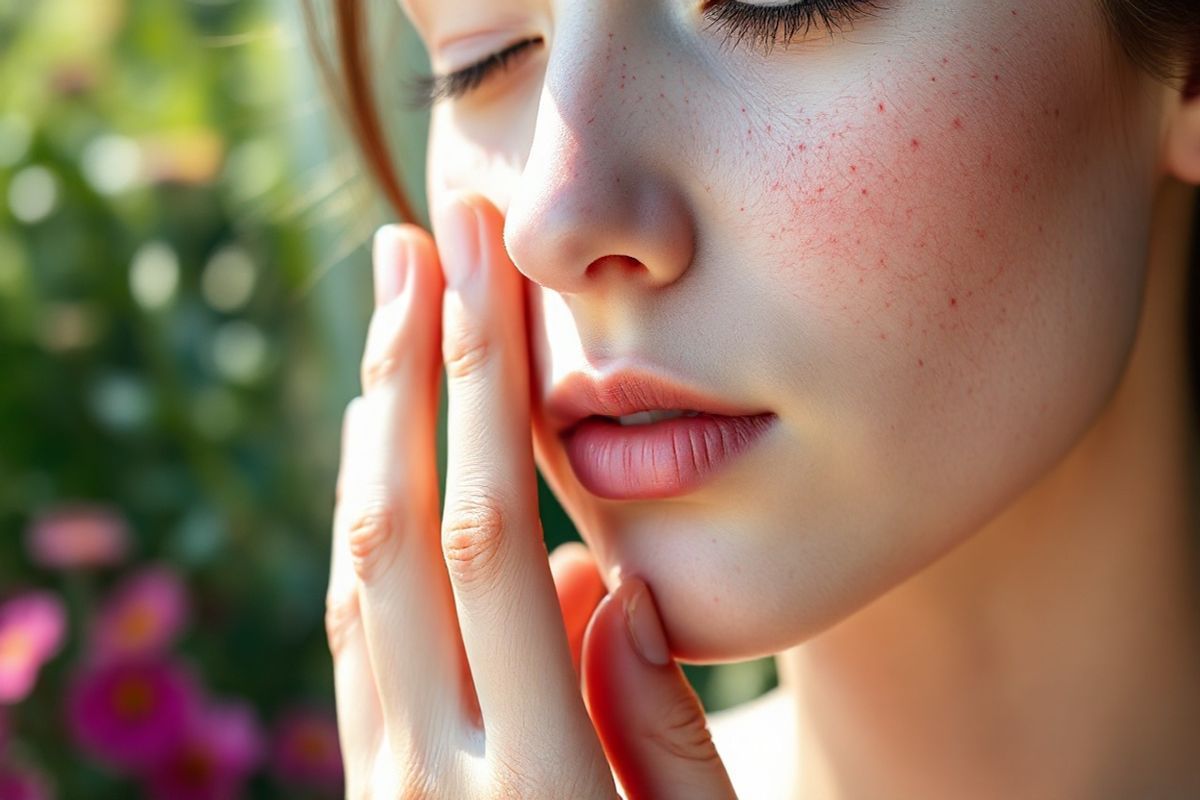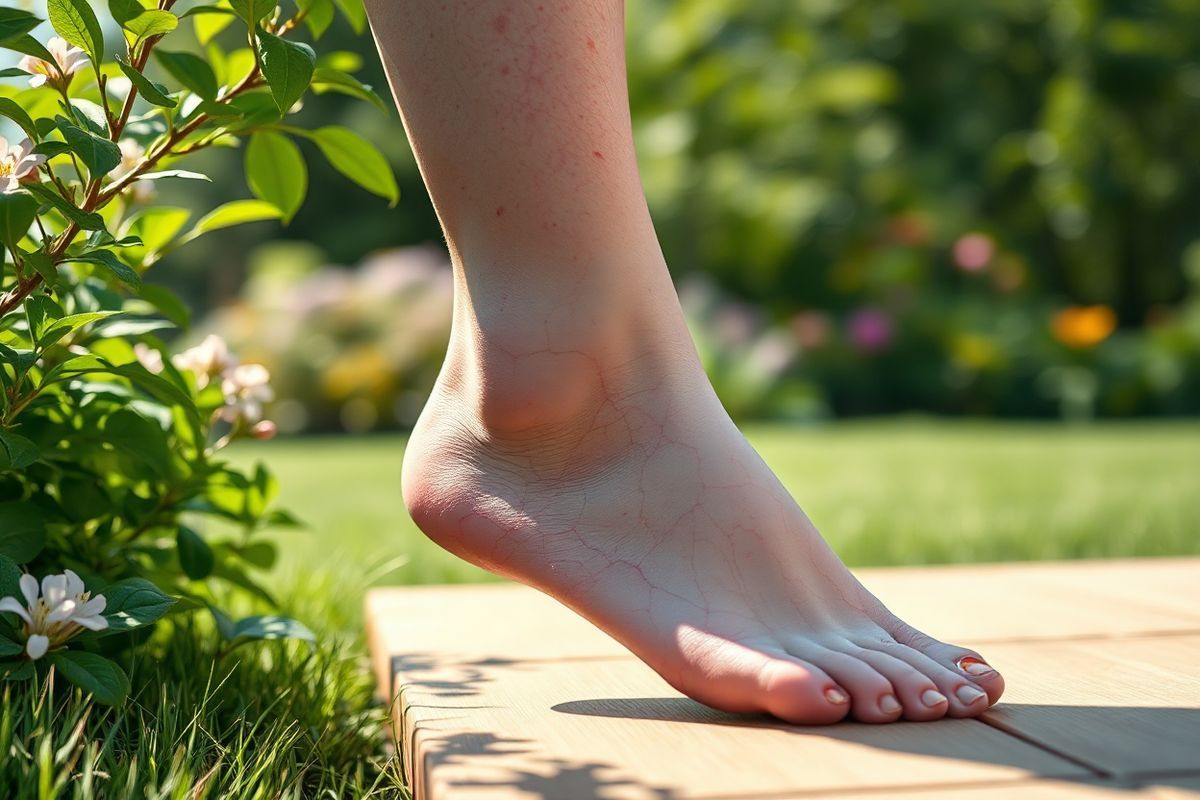Table of Contents
Defining Benign Hereditary Telangiectasia and Its Distinction from Other Vascular Conditions

Telangiectasia is characterized by visible small linear red blood vessels, commonly known as broken capillaries. These are often referred to as telangiectases. Spider veins, which can appear blue, are technically classified as venulectasia due to their involvement with venules (Telangiectasia, n.d.). BHT is a specific type of inherited telangiectasia that typically presents in early childhood, characterized by multiple small, dilated blood vessels on the skin, particularly around the lips and on the face.
It is crucial to differentiate BHT from other vascular conditions, such as hereditary hemorrhagic telangiectasia (HHT), which is a more serious genetic disorder that can cause significant bleeding due to abnormal blood vessel formations. HHT often leads to arteriovenous malformations (AVMs) in various organs and has associated systemic symptoms, in contrast to BHT, which is limited to superficial skin manifestations without any bleeding (Hereditary haemorrhagic telangiectasia (HHT), n.d.).
TablComparison of Telangiectasia Types
| Feature | Benign Hereditary Telangiectasia (BHT) | Hereditary Hemorrhagic Telangiectasia (HHT) |
|---|---|---|
| Inheritance | Autosomal dominant | Autosomal dominant |
| Symptoms | Cosmetic (spider veins) | Systemic (frequent nosebleeds, AVMs) |
| Associated Health Risks | None | Increased risk of bleeding and organ malformations |
| Age of onset | Early childhood (2-12 years) | Childhood or teenage years |
| Treatment | Cosmetic procedures if desired | Management for bleeding and AVMs |
The Genetic Underpinnings of Benign Hereditary Telangiectasia
BHT is believed to follow an autosomal dominant inheritance pattern, meaning that an affected individual has a 50% chance of passing the condition to each child (What Is Benign Hereditary Telangiectasia?, n.d.). While the exact genetic mutations responsible for BHT are not fully understood, family history plays a significant role in its manifestation.
In contrast to HHT, where specific gene mutations, such as those in the endoglin (ENG) or activin receptor-like kinase 1 (ACVRL1) genes, result in systemic vascular malformations, BHT does not exhibit the same level of genetic complexity (Genetic and pharmacological targeting of mTORC1 in mouse models of arteriovenous malformation expose non-cell autonomous signalling in HHT, n.d.). There are suggestions that BHT may also appear sporadically, as evidenced by cases where individuals without a known family history exhibit symptoms.
Identifying Symptoms: How to Recognize Benign Hereditary Telangiectasia

The primary symptoms of BHT are cosmetic and include:
- Spider veins that appear as small, red, or purple lines on the skin, particularly on the face and legs.
- Dilated veins that may be encircled by lighter-colored halos.
- Affected veins typically do not cause any other symptoms, such as itching, burning, or bleeding.
While BHT itself is not associated with systemic symptoms, it is essential to differentiate it from other forms of telangiectasia that may indicate underlying conditions, such as liver disease or connective tissue disorders (Spider and Varicose Veins Causes, Symptoms, and Treatments, n.d.).
TablSymptoms of BHT
| Symptom | Description |
|---|---|
| Spider veins | Small, dilated blood vessels, red/purple in color |
| Light-colored halos | Veins encircled by lighter skin areas |
| Lack of systemic symptoms | No itching, bleeding, or burning |
Exploring Treatment Options: Managing Spider Veins Effectively
While treatment is not medically necessary for BHT, many individuals seek options for cosmetic reasons. Various treatment modalities can effectively reduce the appearance of spider veins:
-
Electrosurgery: This method involves using electromagnetic heat to remove spider veins, effectively sealing them off.
-
Intense Pulsed Light (IPL) Therapy: IPL utilizes a broad spectrum of light to target and shrink visible blood vessels (Current application of intense pulsed light for the management of dry eye disease: A systematic review and meta-analysis, n.d.).
-
Sclerotherapy: This procedure involves injecting a sclerosing agent into the affected veins, leading to their collapse and eventual fading (Varicose veins and spider veins, n.d.).
-
Laser Therapy: This is considered the preferred method for treating facial spider veins. It uses focused light to destroy the dilated blood vessels without harming the surrounding skin.
TablTreatment Options for BHT
| Treatment Method | Description | Efficacy | Side Effects |
|---|---|---|---|
| Electrosurgery | Uses heat to seal off veins | Effective for small veins | Minimal discomfort |
| Intense Pulsed Light (IPL) | Targets blood vessels with light | Reduces appearance of veins | Possible redness |
| Sclerotherapy | Injects a solution to collapse veins | Effective for larger veins | Bruising, swelling |
| Laser Therapy | Destroys veins using focused light | Excellent for facial veins | Mild discomfort, redness |
Living with Benign Hereditary Telangiectasia: Tips for Skin Care and Self-Management
Managing the appearance of spider veins can be an ongoing process. Individuals with BHT may consider the following self-care measures:
-
Sun Protection: Applying sunscreen regularly can help prevent further skin damage and discoloration from UV exposure, which can worsen the appearance of spider veins.
-
Healthy Lifestyle: Maintaining a healthy weight and engaging in regular exercise can improve circulation and possibly alleviate symptoms.
-
Compression Stockings: These can help reduce venous pressure and may assist in preventing the development of new spider veins.
-
Regular Dermatological Check-ups: Consulting with a dermatologist can help monitor any changes in the skin and provide options for treatment if necessary.
TablSelf-Management Strategies for BHT
| Strategy | Description |
|---|---|
| Sun Protection | Use broad-spectrum sunscreen daily |
| Healthy Lifestyle | Engage in regular physical activity |
| Compression Stockings | Wear to improve circulation |
| Dermatological Check-ups | Regular visits for monitoring and advice |
FAQ
What is benign hereditary telangiectasia?
Benign hereditary telangiectasia is a genetic condition characterized by small dilated blood vessels on the skin, primarily seen as spider veins. It does not cause systemic health issues and is usually a cosmetic concern.
How is benign hereditary telangiectasia different from hereditary hemorrhagic telangiectasia?
BHT is primarily cosmetic with no significant health risks, whereas hereditary hemorrhagic telangiectasia is a serious genetic disorder that can cause bleeding and arteriovenous malformations in various organs.
What are the treatment options for benign hereditary telangiectasia?
Treatment options include electrosurgery, intense pulsed light therapy, sclerotherapy, and laser therapy, primarily for cosmetic improvement.
Are there any symptoms associated with benign hereditary telangiectasia?
Symptoms are generally limited to cosmetic changes on the skin, such as spider veins, with no associated systemic symptoms like bleeding or pain.
How can I manage my spider veins at home?
Self-management strategies for spider veins include sun protection, maintaining a healthy lifestyle, wearing compression stockings, and scheduling regular dermatological check-ups.
References
- Telangiectasia. Retrieved from https://dermnetnz.org/topics/telangiectasia
- Hereditary haemorrhagic telangiectasia (HHT). Retrieved from https://www.nhs.uk/conditions/hereditary-haemorrahagic-telangiectasia/
- What Is Benign Hereditary Telangiectasia? Retrieved from https://www.healthline.com/health/benign-hereditary-telangiectasia
- Genetic and pharmacological targeting of mTORC1 in mouse models of arteriovenous malformation expose non-cell autonomous signalling in HHT. Retrieved from https://doi.org/10.1007/s10456-024-09961-5
- Spider and Varicose Veins Causes, Symptoms, and Treatments. Retrieved from https://www.upmc.com/services/heart-vascular/conditions/varicose-spider-veins
- Current application of intense pulsed light for the management of dry eye disease: A systematic review and meta-analysis. Retrieved from https://pubmed.ncbi.nlm.nih.gov/11624638/
- Varicose veins and spider veins. Retrieved from https://www.betterhealth.vic.gov.au/health/conditionsandtreatments/varicose-veins-and-spider-veins











